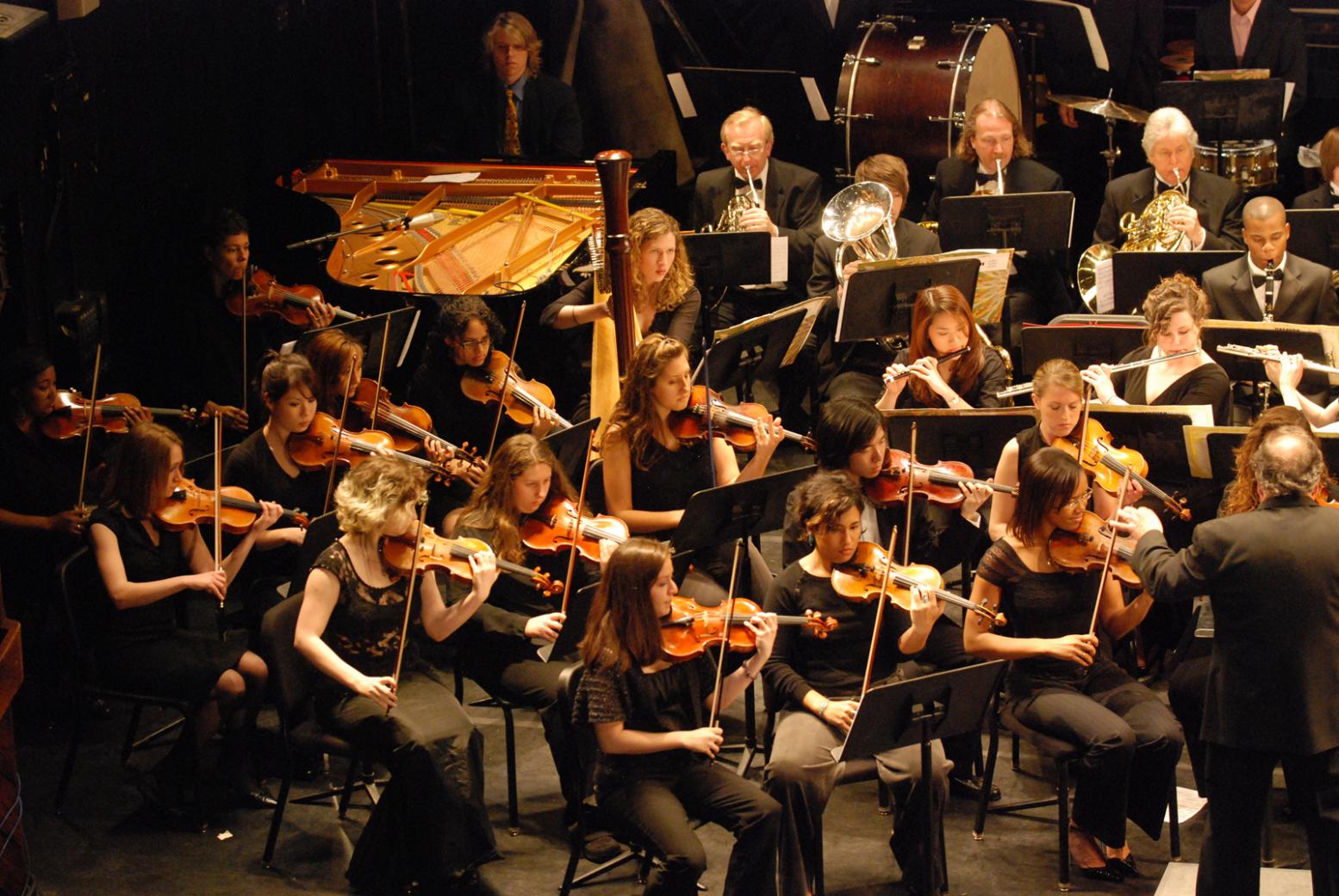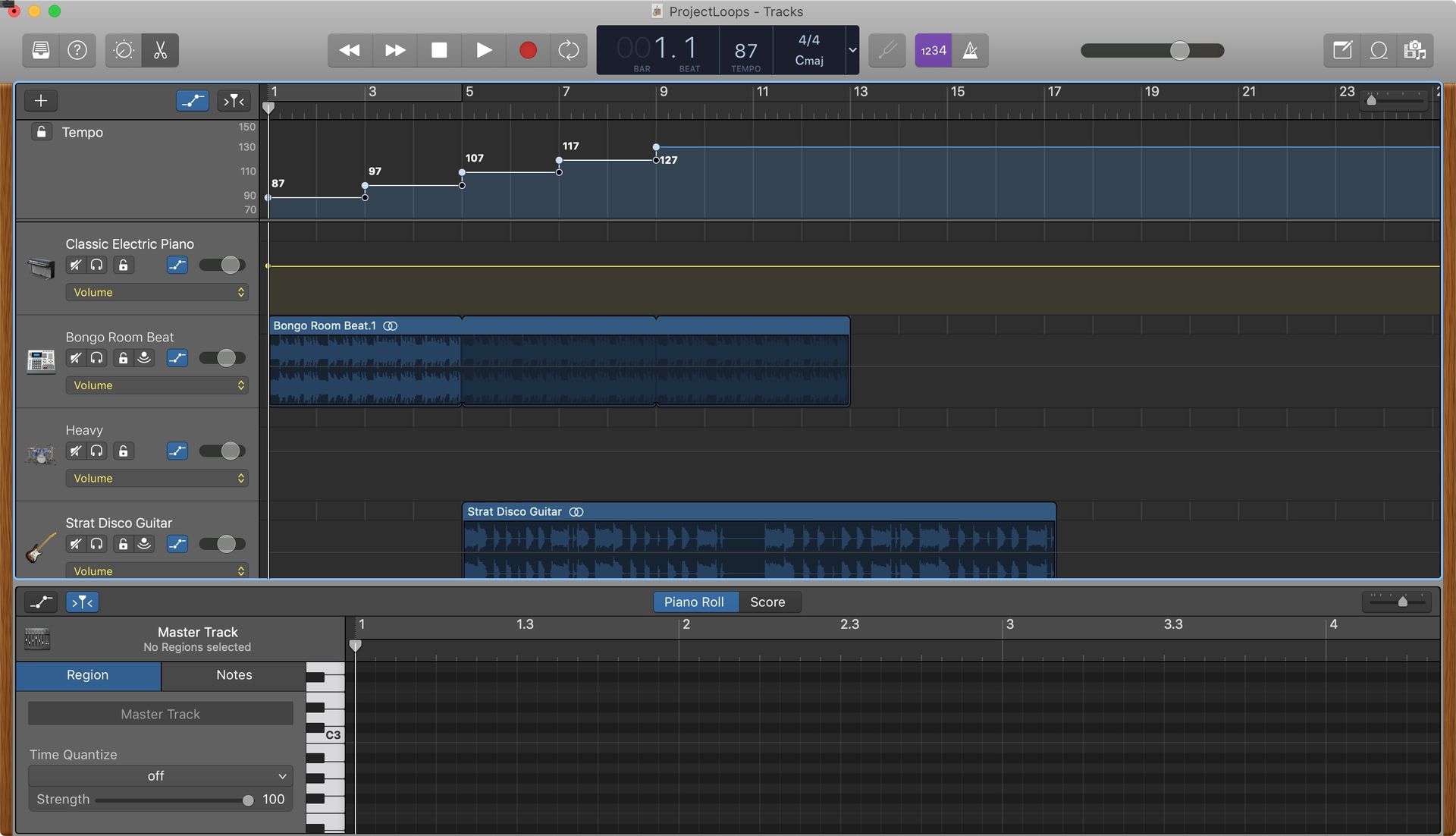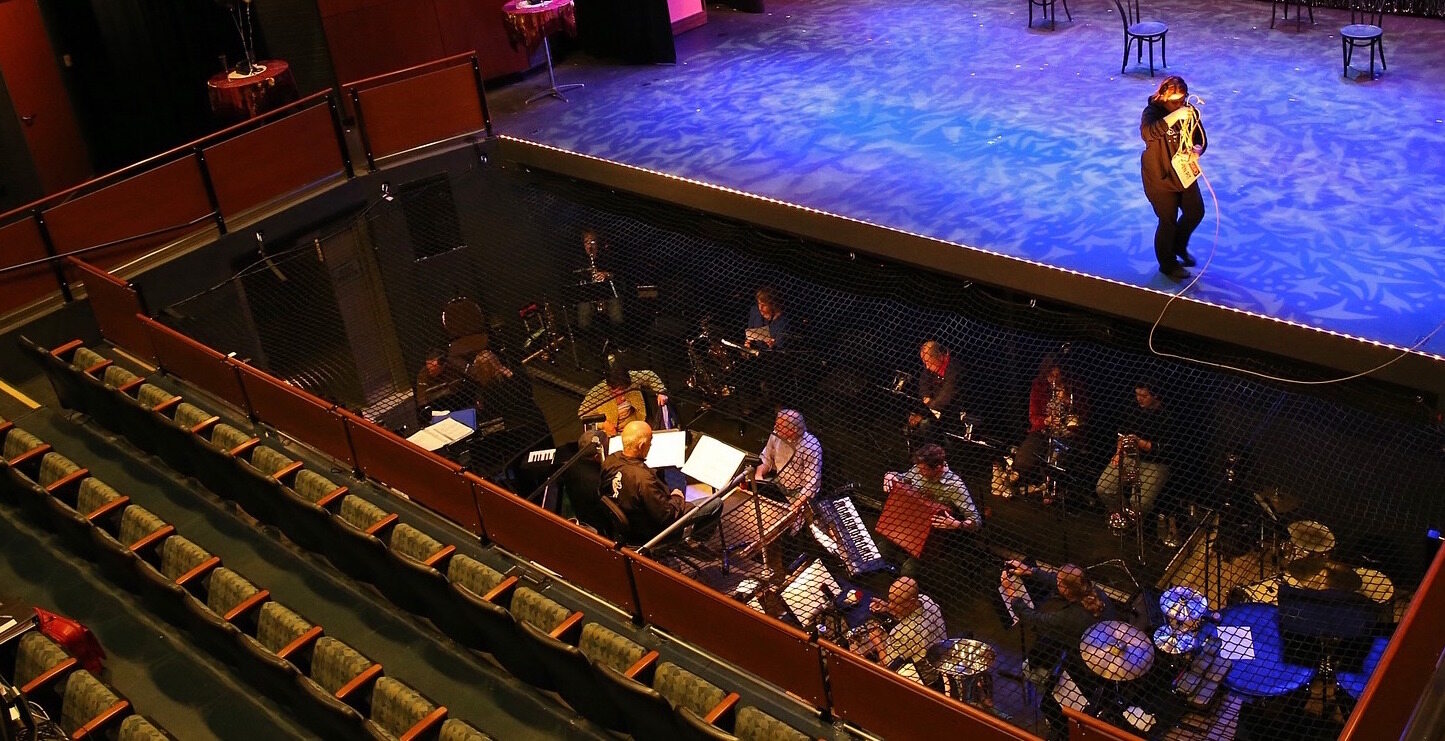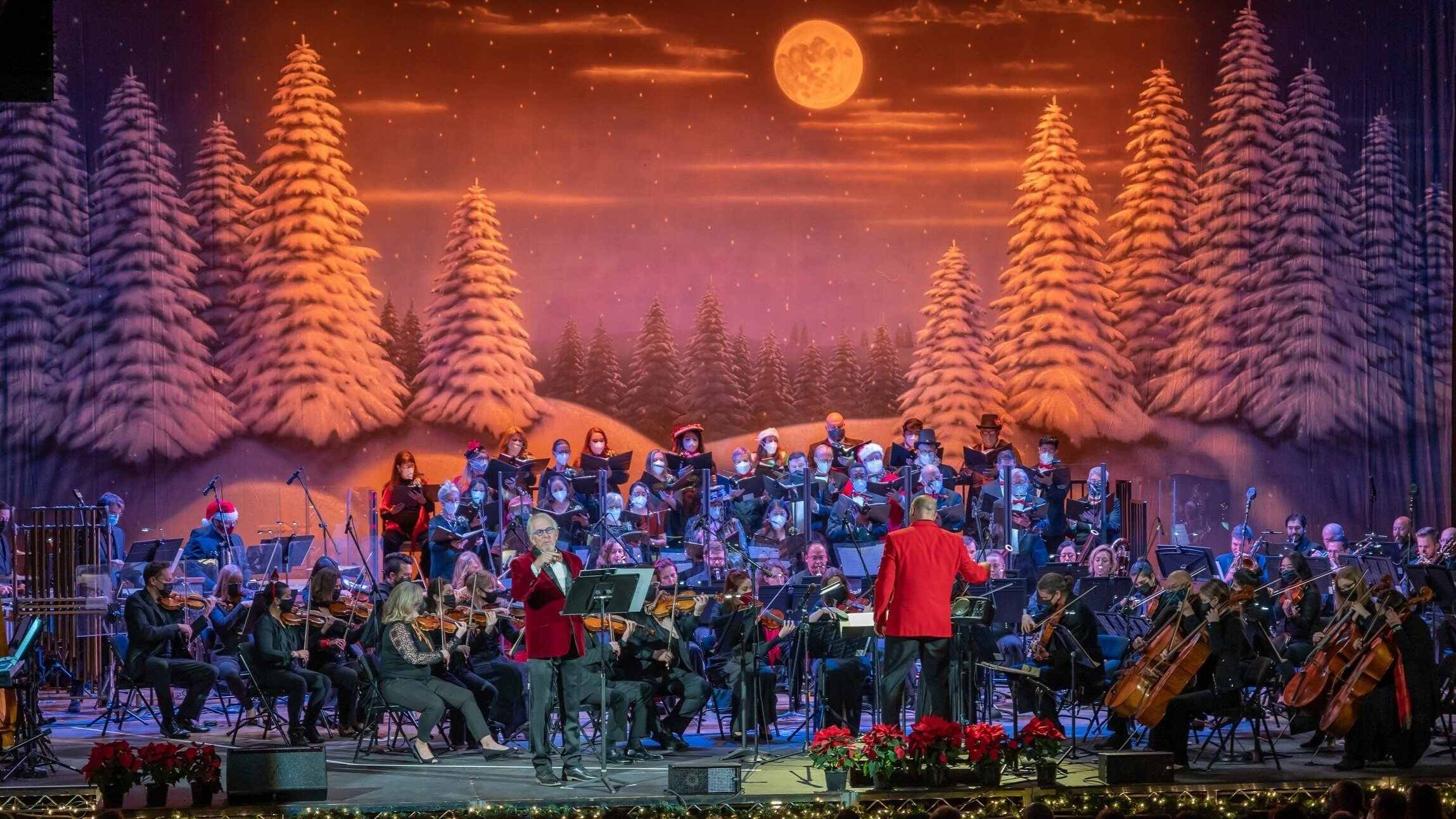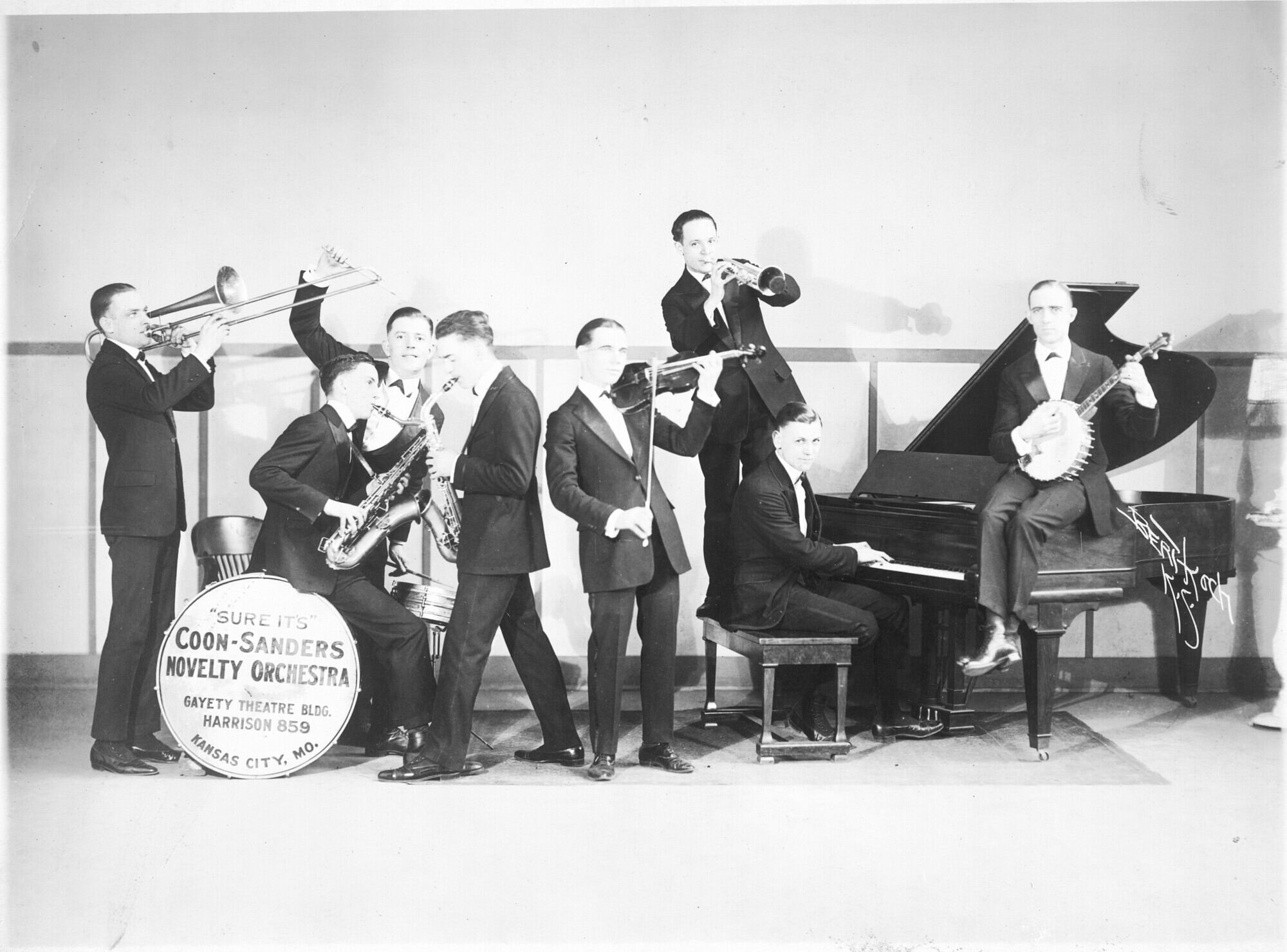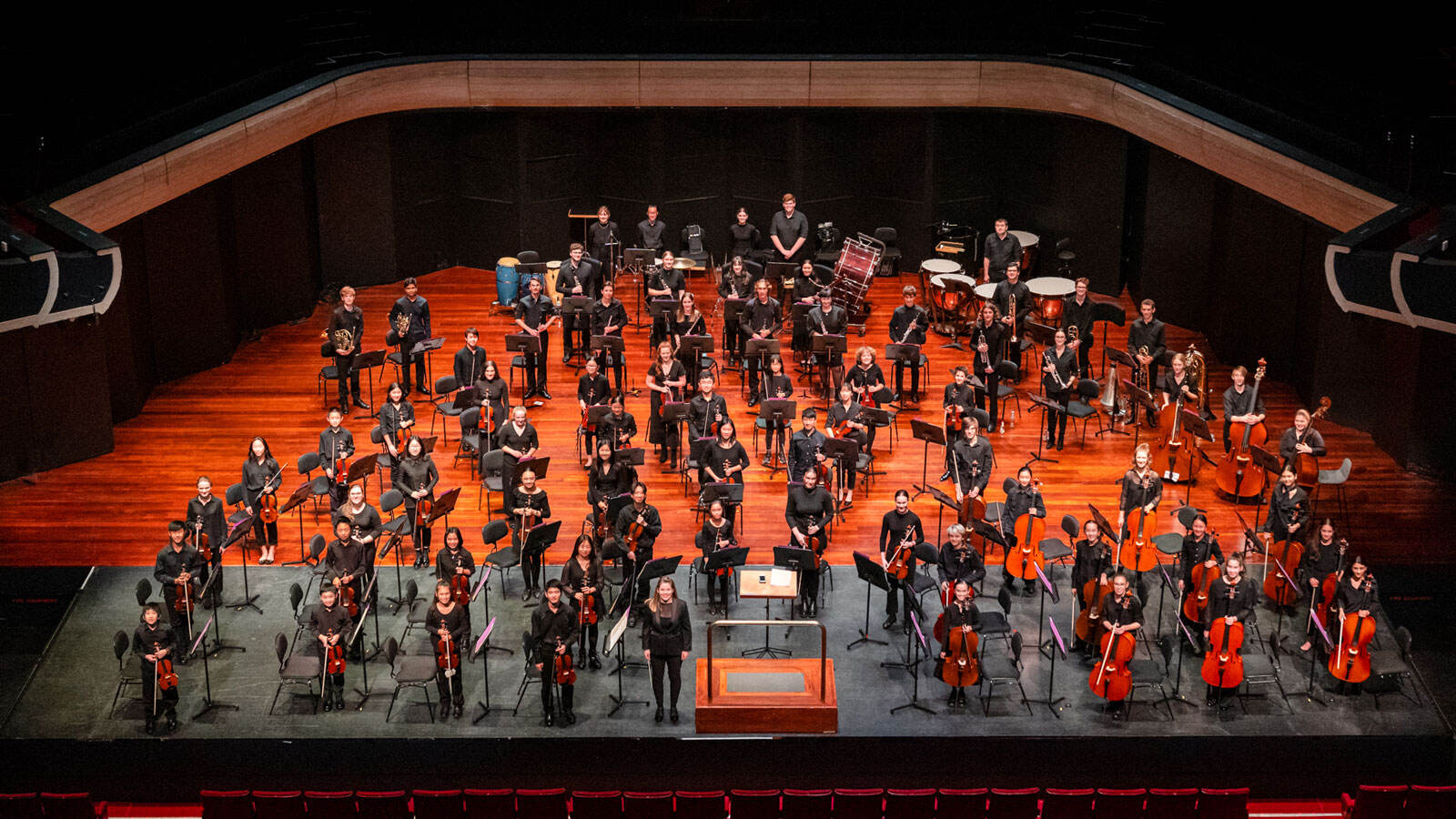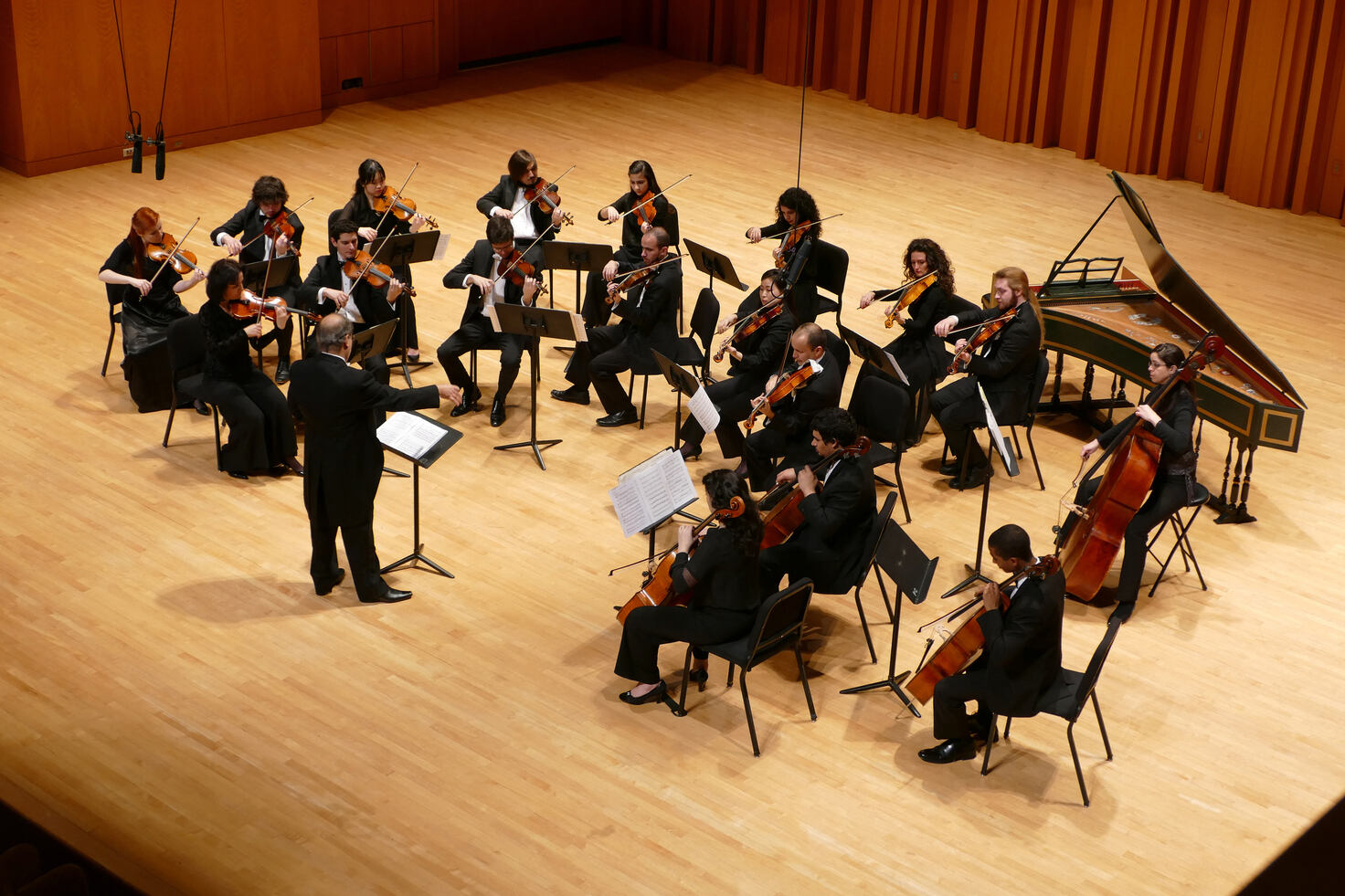Home>Production & Technology>Orchestra>What Are The Different Sections Of The Orchestra?


Orchestra
What Are The Different Sections Of The Orchestra?
Published: February 24, 2024
Discover the various sections of the orchestra, from strings to brass and percussion, and learn about their unique roles in creating harmonious music. Explore the diverse components of an orchestra and their contributions to the symphonic experience.
(Many of the links in this article redirect to a specific reviewed product. Your purchase of these products through affiliate links helps to generate commission for AudioLover.com, at no extra cost. Learn more)
Table of Contents
Introduction
The orchestra is a magnificent ensemble of musical instruments that come together to create breathtaking symphonies and harmonious melodies. It is a place where the diverse voices of various instruments blend seamlessly to produce captivating music that resonates with the soul. Each section of the orchestra plays a crucial role in contributing to the overall sound, adding depth and richness to the compositions.
As we delve into the different sections of the orchestra, it's important to understand the dynamic interplay between the instruments and the musicians who bring them to life. From the soaring melodies of the strings to the bold resonance of the brass, each section brings its unique timbre and character to the ensemble.
The orchestra is a testament to the power of collaboration and unity, where individual talents merge to form a cohesive and harmonious whole. It is a celebration of diversity, as instruments of varying shapes, sizes, and sounds combine to create a symphonic tapestry that transcends cultural and linguistic barriers.
In the following sections, we will explore the distinct characteristics of each section of the orchestra, shedding light on the instruments that comprise them and the pivotal roles they play in shaping the orchestra's sonic landscape. From the ethereal beauty of the strings to the thunderous resonance of the percussion, each section contributes its unique voice to the grand symphonic narrative, captivating audiences and stirring emotions with its compelling musical expressions.
String Section
The string section forms the heart and soul of the orchestra, weaving a delicate yet powerful sonic tapestry that underpins the entire ensemble. Comprising instruments such as the violin, viola, cello, and double bass, the string section possesses a remarkable capacity for evoking a wide range of emotions, from tender vulnerability to soaring grandeur.
Violin
The violin, with its sweet and soaring tones, is often regarded as the crown jewel of the string section. Its versatility allows it to take on various roles within the orchestra, from leading melodic lines to providing rich harmonic support. The virtuosic capabilities of the violinists command attention, captivating audiences with their nimble fingers dancing across the strings, conjuring melodies that resonate with profound emotional depth.
Viola
The viola, slightly larger than the violin and possessing a warmer, more mellow timbre, adds depth and richness to the string section. Often entrusted with harmonizing and enriching the middle voices of the ensemble, the viola imparts a soulful and sonorous quality to the orchestra's sound, infusing the music with a sense of warmth and intimacy.
Cello
The cello, with its deep, resonant tones, embodies a profound sense of melancholy and yearning. Its expressive capabilities allow it to convey a wide spectrum of emotions, from tender introspection to fervent passion. The cellists' deft manipulation of the bow and their intimate connection with the instrument produce melodies that tug at the heartstrings, evoking a profound sense of empathy and introspection.
Double Bass
As the largest and lowest-pitched instrument in the string section, the double bass provides a solid foundation for the orchestra's sound. Its deep, rumbling tones resonate with a commanding presence, anchoring the ensemble and infusing the music with a sense of gravity and authority. The double bass imparts a sense of grandeur and solemnity, lending a robust underpinning to the orchestra's sonic landscape.
The string section, with its exquisite blend of timbres and expressive capabilities, forms the backbone of the orchestra, infusing the music with a rich tapestry of emotions and textures. Its ability to convey profound depths of feeling and evoke a myriad of moods makes it an indispensable component of the orchestral ensemble, captivating audiences with its poignant melodies and stirring harmonies.
Woodwind Section
The woodwind section of the orchestra is a captivating ensemble of instruments that exudes a distinctive charm and versatility. Comprising a diverse array of instruments such as the flute, clarinet, oboe, bassoon, and saxophone, the woodwind section adds a nuanced and expressive quality to the orchestra's sonic palette.
Flute
The flute, with its ethereal and agile tones, occupies a prominent position within the woodwind section. Its shimmering melodies and crystalline timbre infuse the music with a sense of lightness and grace. The flutist's nimble fingers and delicate breath control conjure melodies that dance and soar, evoking a sense of enchantment and whimsy.
Clarinet
The clarinet, with its warm and velvety tones, lends a rich and expressive voice to the woodwind section. Its dynamic range and emotive capabilities allow it to traverse a wide spectrum of moods, from tender lyricism to spirited exuberance. The clarinetist's adept control over the instrument's nuances imbues the music with a sense of depth and emotional resonance.
Oboe
The oboe, with its haunting and poignant timbre, possesses a singular ability to evoke introspection and contemplation. Its distinctive sound cuts through the orchestral texture, commanding attention with its plaintive melodies and expressive phrasing. The oboist's mastery of breath control and nuanced articulation imbues the music with a sense of introspective longing and emotional depth.
Bassoon
The bassoon, with its robust and resonant tones, anchors the woodwind section with its commanding presence. Its expressive capabilities allow it to convey a wide range of emotions, from whimsical playfulness to profound solemnity. The bassoonist's dexterity and control over the instrument's rich timbre infuse the music with a sense of gravitas and whimsical charm.
Saxophone
While not a traditional orchestral instrument, the saxophone occasionally makes appearances in the modern orchestra, adding a contemporary and vibrant dimension to the woodwind section. Its sultry and expressive tones bring a fresh and dynamic energy to the ensemble, expanding the sonic possibilities and infusing the music with a sense of modernity and flair.
The woodwind section, with its diverse array of instruments and expressive capabilities, enriches the orchestra's sonic tapestry with its evocative melodies and nuanced timbres. From the ethereal lightness of the flute to the commanding resonance of the bassoon, each instrument contributes its unique voice, weaving a captivating narrative that captivates audiences and stirs the soul.
Brass Section
The brass section of the orchestra commands attention with its bold and resounding presence, infusing the ensemble with a sense of grandeur and power. Comprising instruments such as the trumpet, French horn, trombone, and tuba, the brass section adds a majestic and commanding quality to the orchestra's sonic landscape.
Trumpet
The trumpet, with its brilliant and triumphant tones, occupies a prominent position within the brass section. Its regal fanfares and soaring melodies pierce through the orchestral texture, evoking a sense of triumph and exuberance. The trumpeter's virtuosic prowess and commanding presence infuse the music with a sense of majesty and grandiosity, captivating audiences with its vibrant and heroic sound.
French Horn
The French horn, with its warm and noble timbre, lends a rich and expressive voice to the brass section. Its mellifluous melodies and resonant tones imbue the music with a sense of depth and lyrical beauty. The horn player's nuanced phrasing and evocative control over the instrument's dynamic range evoke a profound sense of elegance and emotional resonance, adding a touch of poignancy to the orchestra's sonic tapestry.
Trombone
The trombone, with its bold and sonorous tones, anchors the brass section with its commanding presence. Its robust and expressive capabilities allow it to traverse a wide spectrum of emotions, from stirring grandeur to solemn introspection. The trombonist's adept manipulation of the instrument's slide and commanding projection infuse the music with a sense of gravitas and triumphant exuberance, adding a dynamic and resonant quality to the ensemble's sound.
Tuba
As the largest and lowest-pitched instrument in the brass section, the tuba provides a solid and authoritative foundation for the orchestra's sound. Its deep and rumbling tones resonate with a commanding presence, anchoring the ensemble and infusing the music with a sense of gravity and power. The tubist's mastery of the instrument's rich timbre and commanding projection lends a robust and resounding underpinning to the orchestra's sonic landscape, evoking a sense of regal grandeur and solemnity.
The brass section, with its regal fanfares and commanding presence, enriches the orchestra's sonic tapestry with its majestic and triumphant sound. From the brilliant fanfares of the trumpet to the noble resonance of the French horn, each instrument contributes its unique voice, weaving a captivating narrative that captivates audiences and stirs the soul.
Percussion Section
The percussion section of the orchestra is a vibrant and dynamic ensemble that infuses the music with rhythmic vitality and textural complexity. Comprising an array of instruments such as the timpani, snare drum, bass drum, cymbals, xylophone, and a myriad of other auxiliary percussion instruments, the percussion section adds a diverse and colorful dimension to the orchestra's sonic landscape.
Timpani
The timpani, also known as kettle drums, holds a position of prominence within the percussion section. With its deep, resonant tones and commanding presence, the timpani provides a solid rhythmic foundation for the ensemble. The timpanist's deft manipulation of the drumheads and nuanced control over pitch and dynamics imbue the music with a sense of grandeur and rhythmic drive, adding a regal and authoritative quality to the orchestra's sound.
Snare Drum
The snare drum, with its crisp and incisive tones, contributes a lively and rhythmic energy to the percussion section. Its versatile capabilities allow it to produce a wide range of articulations, from sharp staccato accents to vibrant rolls. The snare drummer's precise control over the drum's snares and dynamic range infuses the music with a sense of rhythmic urgency and vibrant texture, adding a spirited and dynamic quality to the ensemble's sound.
Bass Drum
The bass drum, with its deep and thunderous tones, anchors the percussion section with its commanding presence. Its resonant and powerful capabilities allow it to underpin the ensemble with a sense of weight and gravitas. The bass drummer's adept manipulation of the drum's mallets and nuanced control over dynamics infuses the music with a sense of solemnity and rhythmic propulsion, adding a robust and resounding quality to the orchestra's sonic landscape.
Cymbals
The cymbals, with their shimmering and explosive tones, add a touch of brilliance and drama to the percussion section. Their dynamic capabilities allow them to produce a wide range of effects, from delicate crashes to thunderous crescendos. The cymbalist's adept control over the instruments' timbre and expressive range infuses the music with a sense of excitement and vibrant energy, adding a dazzling and evocative quality to the ensemble's sound.
Xylophone
The xylophone, with its bright and crystalline tones, brings a melodic and rhythmic dimension to the percussion section. Its agile capabilities allow it to produce intricate and nimble melodies, adding a sense of whimsy and playfulness to the ensemble's sonic palette. The xylophonist's dexterity and expressive control over the instrument's resonant bars infuse the music with a sense of rhythmic vitality and melodic charm, adding a vibrant and captivating quality to the orchestra's sound.
The percussion section, with its diverse array of instruments and rhythmic vitality, enriches the orchestra's sonic tapestry with its dynamic and colorful sound. From the commanding presence of the timpani to the spirited energy of the snare drum, each instrument contributes its unique voice, weaving a captivating narrative that captivates audiences and stirs the soul.
Other Sections and Instruments
In addition to the core sections of the orchestra, there are several other sections and instruments that contribute to the rich tapestry of sounds within the ensemble. These auxiliary sections and instruments play a vital role in enhancing the orchestral arrangements and adding depth and color to the overall sonic landscape.
Harp
The harp, with its celestial and ethereal tones, occupies a unique position within the orchestra. Its graceful and resonant timbre adds a touch of enchantment and elegance to the ensemble's sound. The harpist's deft manipulation of the instrument's strings and evocative control over dynamics infuse the music with a sense of otherworldly beauty, transporting audiences to realms of sublime tranquility and celestial wonder.
Keyboard Instruments
Keyboard instruments such as the piano, celesta, and organ contribute a rich and harmonically diverse dimension to the orchestra's sonic palette. The piano, with its expressive range and dynamic capabilities, adds a sense of grandeur and virtuosity to orchestral compositions. The celesta, with its delicate and shimmering tones, evokes a sense of enchantment and whimsy, adding a touch of celestial charm to the ensemble's sound. The organ, with its majestic and resounding timbre, infuses the music with a sense of spiritual and transcendent power, commanding attention with its regal and imposing presence.
Auxiliary Percussion
A diverse array of auxiliary percussion instruments, including the triangle, tambourine, glockenspiel, and various other handheld percussion instruments, adds a vibrant and rhythmic energy to the orchestra's sonic tapestry. These instruments provide colorful accents, dynamic textures, and rhythmic punctuation, enhancing the overall impact and vitality of orchestral compositions. The percussive elements contribute a sense of rhythmic urgency and textural complexity, infusing the music with a lively and dynamic quality that captivates audiences and ignites the imagination.
Additional Woodwind and Brass Instruments
In certain orchestral compositions, additional woodwind and brass instruments may be employed to enrich the ensemble's sound. Instruments such as the piccolo, English horn, bass clarinet, contrabassoon, flugelhorn, and euphonium expand the sonic possibilities of the orchestra, adding a diverse range of timbres and expressive capabilities. These instruments contribute nuanced colors, extended ranges, and unique tonal qualities, augmenting the orchestral arrangements with their distinctive voices and enriching the overall sonic tapestry.
String Instruments
Beyond the traditional violin, viola, cello, and double bass, the orchestra may feature additional string instruments to enhance the depth and richness of the ensemble's sound. Instruments such as the viola da gamba, harpsichord, and electric instruments bring a historical, textural, or contemporary dimension to orchestral compositions, adding a diverse array of timbres and expressive possibilities to the ensemble's sonic palette.
Incorporating these diverse sections and instruments into orchestral compositions broadens the expressive range and sonic scope of the ensemble, allowing for a rich tapestry of sounds that captivates audiences and evokes profound emotional experiences. Each instrument, whether traditional or auxiliary, contributes its unique voice to the grand symphonic narrative, enriching the orchestra's sonic landscape with its evocative timbres and expressive capabilities.
Conclusion
In conclusion, the orchestra stands as a testament to the power of collaboration and unity, where a diverse array of instruments and musicians come together to create a harmonious and transcendent musical experience. Each section of the orchestra, from the soaring strings to the resounding brass, contributes its unique voice to the grand symphonic narrative, enriching the ensemble's sonic tapestry with a rich array of timbres and expressive capabilities.
The string section, with its exquisite blend of timbres and expressive capabilities, forms the backbone of the orchestra, infusing the music with a rich tapestry of emotions and textures. From the ethereal lightness of the flute to the commanding resonance of the bassoon, the woodwind section adds a nuanced and expressive quality to the orchestra's sonic palette.
The brass section commands attention with its bold and resounding presence, infusing the ensemble with a sense of grandeur and power. From the brilliant fanfares of the trumpet to the noble resonance of the French horn, each instrument contributes its unique voice, weaving a captivating narrative that captivates audiences and stirs the soul.
The percussion section, with its diverse array of instruments and rhythmic vitality, enriches the orchestra's sonic tapestry with its dynamic and colorful sound. From the commanding presence of the timpani to the spirited energy of the snare drum, each instrument contributes its unique voice, weaving a captivating narrative that captivates audiences and stirs the soul.
In addition to the core sections of the orchestra, auxiliary sections and instruments such as the harp, keyboard instruments, auxiliary percussion, and additional woodwind, brass, and string instruments, contribute to the rich tapestry of sounds within the ensemble. These instruments play a vital role in enhancing the orchestral arrangements and adding depth and color to the overall sonic landscape.
The orchestra, with its remarkable capacity for evoking a wide range of emotions and captivating audiences with its compelling musical expressions, serves as a testament to the enduring power of music to transcend cultural and linguistic barriers, uniting listeners in shared moments of beauty and emotional resonance. As the diverse voices of the orchestra blend seamlessly to produce breathtaking symphonies and harmonious melodies, they affirm the profound impact of collaborative creativity and the universal language of music.

